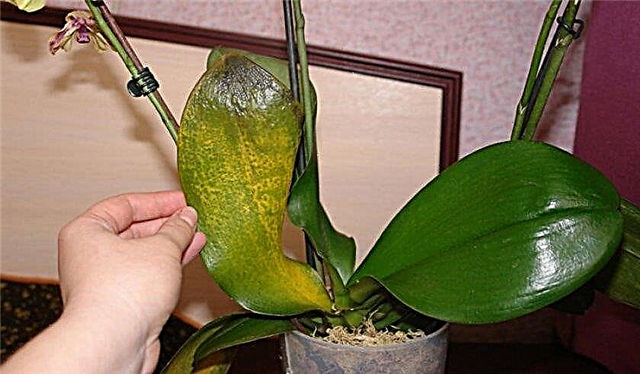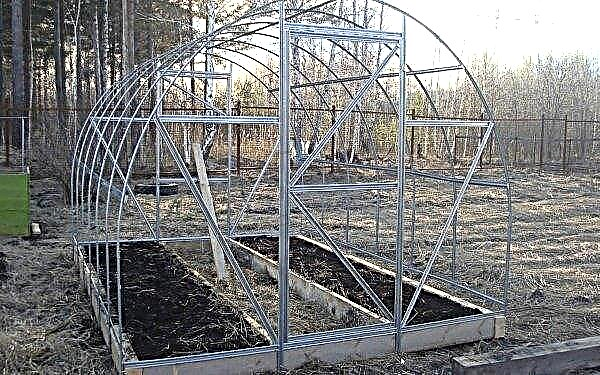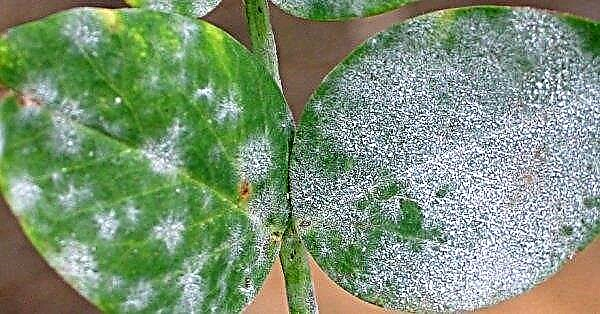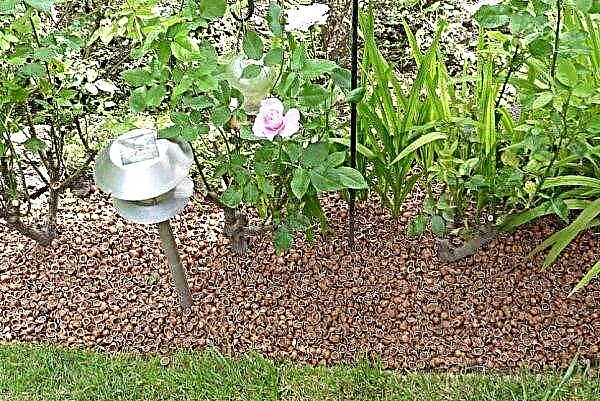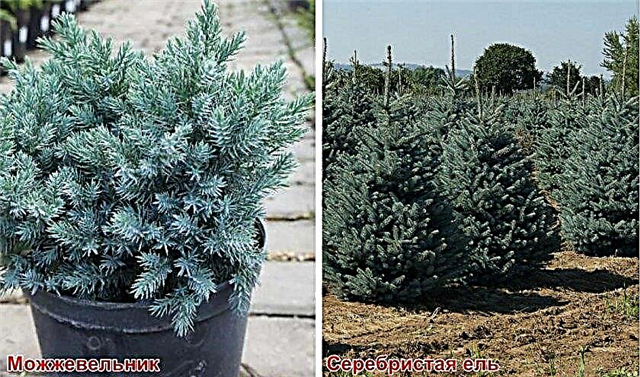Once orchids were grown in greenhouse conditions and only by specialists. Now they are becoming more common in ordinary apartments. They are easy enough to grow, if you follow certain rules. Domestic orchids do not grow like other indoor plants in the ground, they exist in a container with bulk materials such as bark, coal and moss. Learn more about planting and successfully put your knowledge into practice.
Landing time
Orchids receive moisture and nutrients from the substrate on which they are grown, through the roots. They are planted in loose material mixed with organic matter: peat and moss. This provides excellent drainage and root aeration. Planting time is determined by the presence of planting material. At home, these are bulbs or children.
Did you know? Since different types of orchids are found throughout the world, it is believed that they existed on Earth before the separation of the continents.
Children are formed on a flowering plant, and bulbs can be ordered in one of the nurseries. The bulb should be planted as quickly as possible, since it can dry without soil. The baby grows on the mother plant for up to 6 months until it has roots. Then it is separated and planted in a substrate. As for the transplantation of a growing plant, it is necessary if the material in which the orchid grows is crushed, becoming more dense, restricting air circulation and the flow of nutrients to the roots. A transplant is carried out every few years. If it seems to you that the substrate is being destroyed or compacted, the time for transplantation has come. It is necessary to plant right after the plant finishes flowering and begins a new vegetative period. Different varieties bloom in different seasons, so there is no one season that is optimal for transplanting.
A transplant is carried out every few years. If it seems to you that the substrate is being destroyed or compacted, the time for transplantation has come. It is necessary to plant right after the plant finishes flowering and begins a new vegetative period. Different varieties bloom in different seasons, so there is no one season that is optimal for transplanting.
Preparatory work
Preparatory work includes the purchase of a suitable material and pot. Suitable soil is purchased at the store or mixed on its own. The main requirement for it is that it must be loose, provide oxygen access, and not allow water to stagnate. The capacity for planting should be small so that the roots of the orchid develop proportionally.
Capacity preparation
For planting the bulb, you can use a pot, the volume of a plastic cup or part of a plastic bottle.
Important! If you provide a larger pot, then the orchid will concentrate its energy on growing the root system, and will not bloom for many months.
You can choose a plastic, clay, glass or ceramic pot that matches the size of your plant. Check for drainage holes. Lack of good drainage of water will cause root decay. Some species have roots that can photosynthesize. For phalaenopsis, a transparent glass or plastic pot is bought to add sunlight to the roots. At the bottom of the pot lay a small drainage of ceramic shards, or synthetic materials. This will enhance the removal of excess water from the substrate, which is good for the roots.
Some species have roots that can photosynthesize. For phalaenopsis, a transparent glass or plastic pot is bought to add sunlight to the roots. At the bottom of the pot lay a small drainage of ceramic shards, or synthetic materials. This will enhance the removal of excess water from the substrate, which is good for the roots.
Video: how to choose a pot for orchids
Selection and tillage
Many orchids that are grown in the apartment are epiphytic, i.e. those that grow based on a support. In this case, this is the material that you put in the pot. If placed in the soil, they will die. The combination of spruce bark, sphagnum moss, charcoal and coconut husks is suitable for most species.
The most common is the following mixture in a ratio of 4: 1: 1:
- sawdust, bark or coconut husk;
- charcoal medium fraction;
- perlite.

Soil preparation:
- Find a large bucket for your mix.
- Mix all the ingredients thoroughly.
- Pour the mixture with hot water (+ 75 ° C) so that water covers the mix.
- Leave it overnight.
- The next day strain the mixture. Extraneous impurities and dust are removed together with water. Your substrate is now ready for planting.
The preparation of the bulb is that it needs to be germinated on the windowsill for several days, until the roots appear. After this, planting in a pot.
Did you know? There are over 25,000 documented orchid species in the world. This means that there are four times more of them on the planet than birds and four times more than mammals!
How to plant an orchid at home: the main ways
Orchids are sensitive to bacteria and other microorganisms. To prevent illness, decontaminate the instruments in a cleaning solution from ordinary bleach and water, taken in equal proportions, before use. Wash your hands with soap or use medical gloves for transplanting.

Landing Instructions:
- Prepare a new pot. If the container is reused, sterilize it with boiling water.
- Place drainage at the bottom. These can be pieces of polystyrene or ceramic.
- Place the planting material in a new pot.
- Add the substrate to the pot. Use your thumb and forefinger to hold the new material.
Place the pot in moderate light with partial sunlight. Water according to variety needs. If a home flower has had a bacterial or putrefactive infection, then after pruning it may remain without roots. In this case, you need to save part of the plant with a growth point.
Important! To skip the mixture between the roots, use chopsticks. Shake the pot several times to spread the substrate between the roots.
Instructions for growing orchids from parts of plants with growth points:
- Treat the growth zone with fungicide and dry.
- Pour boiled water into a glass and place the rest of the orchid there.
- Put in a warm place with good air circulation and a temperature of +23 ... + 25 ° С.
- While the orchid will grow roots, it is recommended to wipe the leaves with a cotton swab soaked in a solution of succinic acid.
- When the roots grow to 7 cm, the plant can be planted for growth in the substrate.
- Choose a not very large pot to prevent stagnation of water.

For orchids Phalaenopsis and Wanda
Orchids Wanda, Phalaenopsis and Molina come from the warm islands of the South Pacific. These sympodial epiphytic species prefer bright sunshine, warm temperatures and high humidity. Their long roots are adapted to draw moisture and nutrients from the atmosphere. For such plants, you can apply a landing on the block. A support is made from a large piece of bark, which is wrapped with moss and secured with a twine.
Orchid roots are planted on moss and wrapped on top with the next layer of moss. The structure is moistened and fixed on the wall or in a special basket. Wanda can grow very large, so it is usually suspended in a wooden basket in a room with a temperature of +21 ... + 26 ° C and a lot of bright light. She is very airy. A transplant is required if you notice that the plant has outgrown its basket.
One of the main advantages of this variety is that it is less prone to fungal and bacterial diseases than others. Phalaenopsis is the most common of orchids. Phalaenopsis is planted in a plastic pot. After planting the baby, the orchid will grow for 4–6 years before the first flowering begins. A transplant will be needed as the pot is developed by the roots.
Video: how to plant orchids on blocks
For hygrophilous orchids
Orchid Brassia - a native of tropical rainforest. Like the rest, it is an epiphyte, but can tolerate a much more humid climate and growth conditions. Brassia needs a pot with small holes throughout the container and a larger proportion of moss in the substrate.
Important! Never let the water touch the bottom of the pot: capillary irrigation will cause the roots to get too much water, which will cause them to rot.
She also needs humidity from 55 to 85% and a bright sunny place for growth. To increase humidity, place the plant in a shallow plate or tray with pebbles and water, which should be just below the surface of the pebbles.
For sympodial orchids
Sympodial orchids are plants that have a rhizome at the base (usually horizontal, at least when they are grown in pots), and a series of growth points (pseudobulb) developing along it. If you divide the rhizome into pieces with 3-4 pseudobulbs, then you can grow new plants from each piece.
Cattleya Orchid is one of the most beautiful sympodial species. Representatives of this species can grow in a variety of conditions: outdoors, on trees, in tropical gardens, in pots, in shaded areas, in buildings and in greenhouses with a controlled climate. As soon as Cattleya begins to bloom, she will continue to bloom all year long, provided that you take care of her and ensure optimal conditions.
Cattleya transplant features:
- You need to transplant no more than 1 time in 4 years. Reason for transplanting: soil depletion or souring. This is due to the fact that the flower is very painful to transplant.
- If some species drainage not needed then in a pot of this kind, it is obligatory.
- When the plant begins to grow above the wall of the pot, dump it from the old pot, if necessary, divide into parts with a sterile knife. If this is not possible, do not divide the plant, just transfer it to a larger container.
The plant needs daily watering during the flowering period. At rest, let the soil dry before starting the next watering.
Video: how to plant cattleya
Care for indoor plants after planting
After planting, the plant needs a window with indirect sunlight. Watering is carried out immediately after planting and after 2 weeks with boiled water. To improve nutrition, feed her a growth stimulator. In the first week after planting, the orchid needs only watering. In the second week, you can make conventional fertilizers. Proper care will include several key factors, each of which depends on the others.
Did you know? Unlike other plants and animals, orchids can create interspecific hybrids, as well as hybrids between related genera. This allows you to create a huge number of hybrids and is the reason for the very complex names of many orchids.
It:
- Light and shadow;
- temperature;
- air movement;
- humidity;
- watering;
- the state of the substrate in which the flower grows;
- fertilizer.

Plant fixing
Depending on the life cycle of your orchid and a particular variety, fixing it in a new pot can take from several weeks to a year (for Cattleya orchids). Find out how much time your variety needs from the relevant literature. It also affects when to wait for a new flowering.
Location and optimal conditions
Place the orchid near the window, located to the south or east, so that the lighting is as bright as possible. These plants need a strong but indirect light in order to grow and bloom perfectly. If you only have a window that faces west, cover it with a curtain to prevent sunburn on leaves and flowers. Placing pots near the north window may not give them enough light to bloom.
Important! An excess of light makes the leaves turn yellow and die. And with a lack of light, the orchid will not bloom.
Natural light varies with weather, season, time of day, and geographical location. Therefore, for more northern regions, “good lighting” will mean the maximum possible amount of light in late autumn and winter, and the need to reduce it in the fall. For bright southern areas, you may need year-round shading of the window with a curtain at any time on the mountain. Keep the temperature at +16 ... + 24 ° C. If the temperature is moderate, then the orchids will flourish, but when the temperature drops, they will die. Although the correct temperature varies depending on the type of orchid, you need to strive to ensure that the night was not lower than + 16 ° C. The difference between day and night indicators should be about +10 ... + 15 ° С with warmer air in the daytime. The orchid can withstand indicators of +37 ... + 38 ° C, but prolonged exposure to this temperature is harmful to the plant. At high temperatures, the plant is not able to transport calcium. As a result, the leaves begin to die.
If the temperature is moderate, then the orchids will flourish, but when the temperature drops, they will die. Although the correct temperature varies depending on the type of orchid, you need to strive to ensure that the night was not lower than + 16 ° C. The difference between day and night indicators should be about +10 ... + 15 ° С with warmer air in the daytime. The orchid can withstand indicators of +37 ... + 38 ° C, but prolonged exposure to this temperature is harmful to the plant. At high temperatures, the plant is not able to transport calcium. As a result, the leaves begin to die.
This is very true for young plants that you just started growing. High humidity and good air circulation can compensate for excessive daytime temperatures. Make sure that the room in which the orchids are located receives enough fresh air, since the health of air-loving epiphytes depends on this. When the street temperature is above + 18 ° C, open the windows in the house to provide a slight breeze. Or use a pendant fan directed away from the flowers so that the air does not stagnate.
Fertilizer and watering
Water the plant whenever you feel that the soil is sufficiently dry. The frequency of watering should depend on the use of water, and not on a certain number of days between waterings. It is very simple to measure soil moisture:
It is very simple to measure soil moisture:
- Dig your fingers into the ground and remove them.
- If there is no moisture on the fingers, water the orchid by pouring water into the pan and letting it soak in drip irrigation.
- Leave the water in the pan for a while (up to half an hour) and then do not forget to drain it.
Did you know? If you use a dehumidifier, use it only at a humidity of at least 60%. A desiccant is able to inhibit the development of bacteria and pathogenic fungi.
Fertilize 1 time per month during flowering. Do not water the flowers for several days after fertilizing. This leaches them into a pan with water and the plant simply does not receive nutrients. After flowering, leaf growth stops and at that time the orchid does not need so much fertilizer and water.
Video: how to fertilize an orchid
Pruning and transplanting
When the flowers on the stem fall off, remove it. Orchids do not grow once on the same stem, with the exception of phalaenopsis or moth orchids. For phalaenopsis, cut just above the lower 2 nodes or joints of the stem as soon as the opal flower. For varieties with pseudobulbs, you need to cut directly above the pseudobulb. Trimming with sterile instruments to prevent the transfer of possible diseases to healthy plants.
How to care during the flowering period
The flowering period is exactly the moment for which you care for the orchid. Bright and attractive flowers grow very easily, but at the same time need care.
Did you know? Some types of orchids can bloom again after pruning, and some bloom only once.
Instructions for the care of blooming orchids:
- Fertilizing will be needed at least 1 time per month and not more often than 1 time per week.
- The basic principle of feeding: it is better to underfeed than to overfeed. If you are unsure of the need and the plant looks quite healthy and flowering - just use a half dose of fertilizer.
- Fertilizers for orchids should not contain urea.
- Fertilize in moist soil.
- Provide indirect lighting for plants.
- Do not move the flower during flowering.
- Control the right microclimate. If the orchid is cool, it will drop flowers earlier than usual.
- The best time for watering is morning. Do not forget to drain excess water from the pan.
- The main principle of watering: it is better to dry than waterlog.
- Water with moderately warm water.
- Remove the stem after the flowers fade. They bloom from 1 to 4 months, depending on the variety.

Diseases, pests and methods of dealing with them
Most of the diseases associated with improper watering: underfilled, poured, poured large drops on the leaves. To check for excessive moisture accumulation, carefully inspect the roots of the plant. If they look soft or brown, then the soil is waterlogged. Gray-white dried roots - the plant does not have enough water. Normalize watering the plant.
Signs of pests are sticky leaves and black, dusty mold. Clean affected leaves with soapy water. Wipe them with a soapy sponge. This will remove stickiness and soot, and also kill all remaining insects. Spray an insecticide on orchids if the problem persists. Buy products that are safe for orchids.
The main pests of orchids:
- A squad of Hemoptera unites insects that suck plant juices. These are bedbugs, aphids, false shields, worms and other representatives of this detachment. They are attached to the underside of the leaves, in the leaf sinuses, on pseudobulbs and rhizomes. They can hide in old shells. The surface of the sheet is covered with small spots, turns yellow, darkens and fades. Use a soft toothbrush immersed in an insecticide to treat the plant. Also, insecticides are applied by spraying with repeating the procedure after 2 weeks. Prevention measures: removal of old leaves and leaf membranes to eliminate possible shelters for pests.
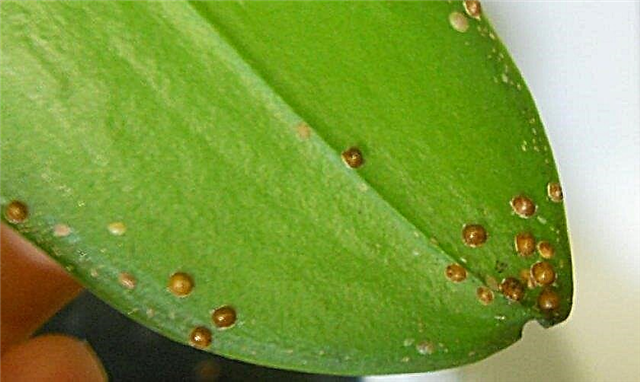
- Melibus (mealybug) It is also a sucking insect attacking any part of the plant, but more often - the junction of the leaf and stem. Treat the plant with a solution of insecticidal soap or Malathion. The substance is a broad-spectrum insecticide and acaricide used against most pests. Spray on the entire plant, paying particular attention to the axils of the leaves. After 2 weeks, repeat the treatment.
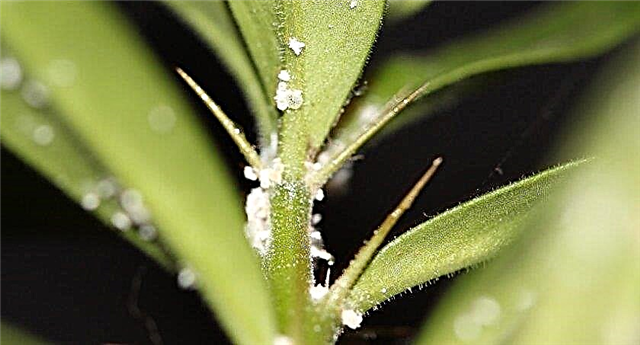
- Thrips - small sucking insects of white color. Infect flowers and leaves. Their action is noticeable in multiple small discolored spots and deformation of the leaf plate. Use Malathion for repeat treatment after 2 weeks.

- Spider mite is not an insect. It belongs to the arachnids. Its presence is noticeable on cobwebs, which begin to entangle the leaf plate. The dried parts of the sheet die off, previously covered with a silver coating. The plant is treated with miticide or a spider mite spray. The insect does not tolerate heat and drafts, which can be used as a preventive measure. A new generation of ticks matures in 6 days. Therefore, you will need to do 3-4 treatments.
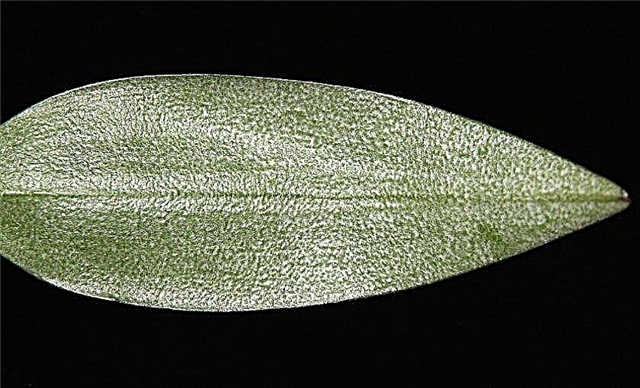
You need to treat infections with a fungicide or a bactericide. Common bacterial infections that can affect orchids include brown rot, black rot, and others that appear stained on leaves and pseudobulbs. Common fungal infections include rot and root rot and affect all parts of the plant.
The main fungal diseases:
- Black rot - This is a fungal disease that occurs when water stagnates in a pot. Spores of the fungus float, spreading with the help of water. The bottom side of the sheet is infected first. Small brown spots appear on it, which quickly turn purple-black. Mushroom growth can spread throughout the plant. If it is not valuable, then it is worth throwing it away. A valuable species of orchids is isolated from other plants, the affected parts are removed and treated with fungicide.

- Brown Rot Caused by Erwinia Fungus. It appears in the form of brown spots on leaves surrounded by a yellow halo. It spreads very quickly. It has a very bad smell. The pathogen is favored by hot air and humidity. For treatment, it is necessary to reduce watering and strengthen the air circulation with a fan.

- Root rot spreads when used water is dirty or stagnates in a sump. This is a very contagious disease. His treatment includes removing all affected parts of the plant, treating the roots with fungicide and replanting in a new pot and new soil. If enough roots remain after pruning, the plant can restore its health.
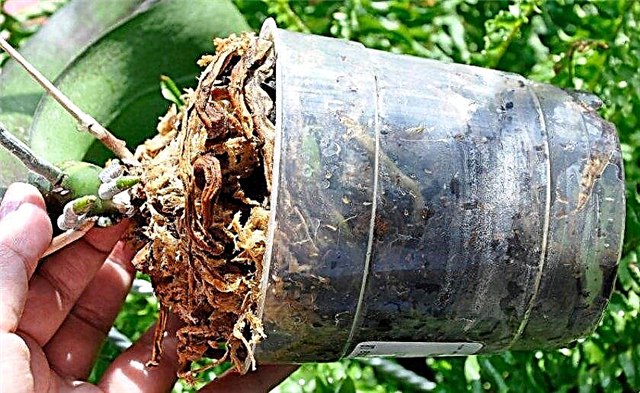
- Root of the cervix occurs in warm weather, high humidity and poor circulation. The disease will also spread throughout the plant and ultimately destroy it.
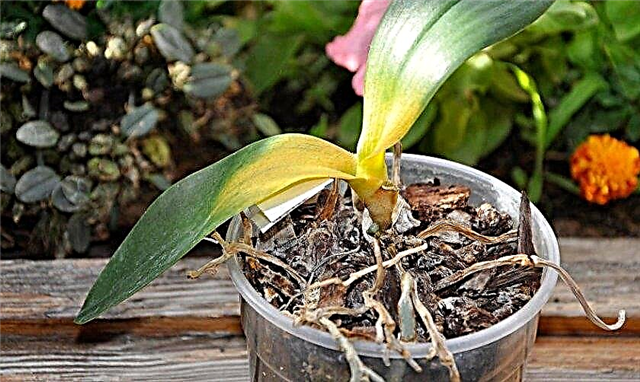
- Fusarium rot infects the leaves. They become yellow, thin, wrinkled and fade. The main symptom is discoloration. If you cut the rhizome, then inside it will be colorless or purple in the late stages of infection. Such a pathogen is easily tolerated by non-sterile instruments.
